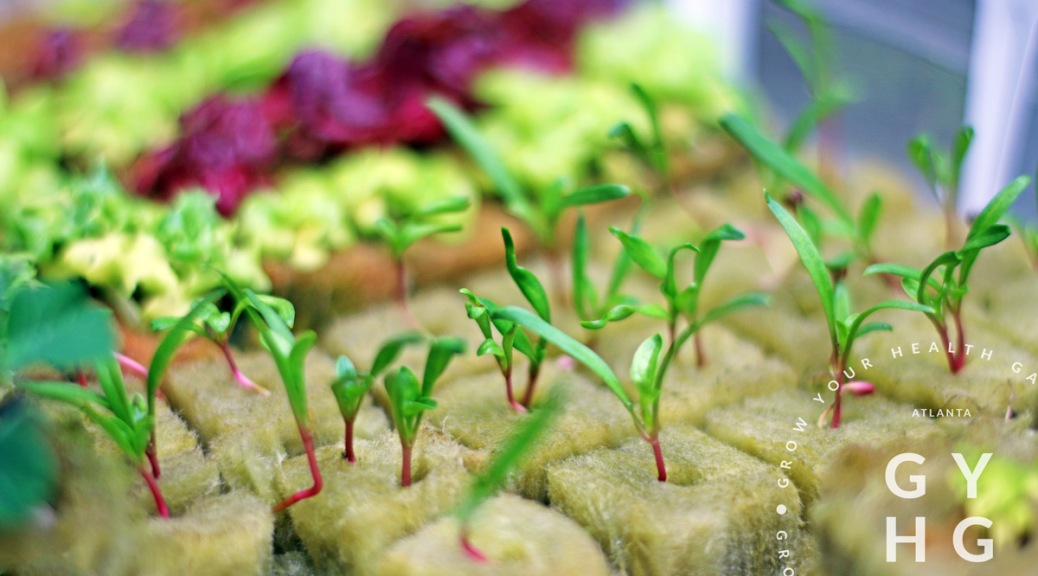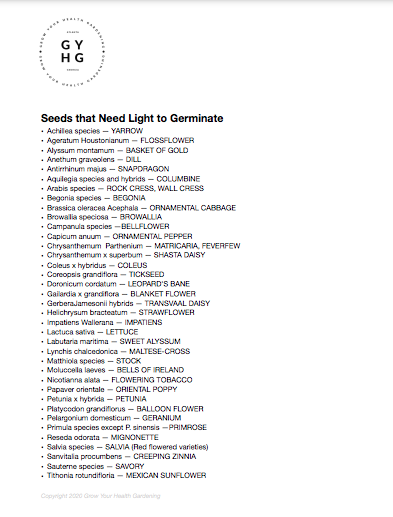This time of year, many a gardener will begin breaking out their seeds from storage and gather up their recent purchases in preparation for the upcoming growing season. With earnest, one cell tray or by one rock wool at a time, life will begin inside the gardener’s abode, protected from the cold weather outside.
Seed starting, used to be an annual event for me until I realized the importance of succession planting. If I wanted to have a continual supply of greens or move from one season to the next seamlessly, a little bit of planning was all I needed to do the trick.
If I was going to do succession planting, I needed to make it part of my everyday planting and tending tasks (even if all it means is a quick glance to check moisture levels or that your “babies” (as I affectionately call them) are growing as they should was the only task that day.) And as an everyday task, it needed to be part of my environment. The end result to succession planting throughout the year? A seed starting station.
If you’re only planting seeds one time a year, I encourage you to read on and challenge yourself to look at seed starting in a whole new light (pun intended). We want to set you up for success for the ENTIRE growing season ahead!
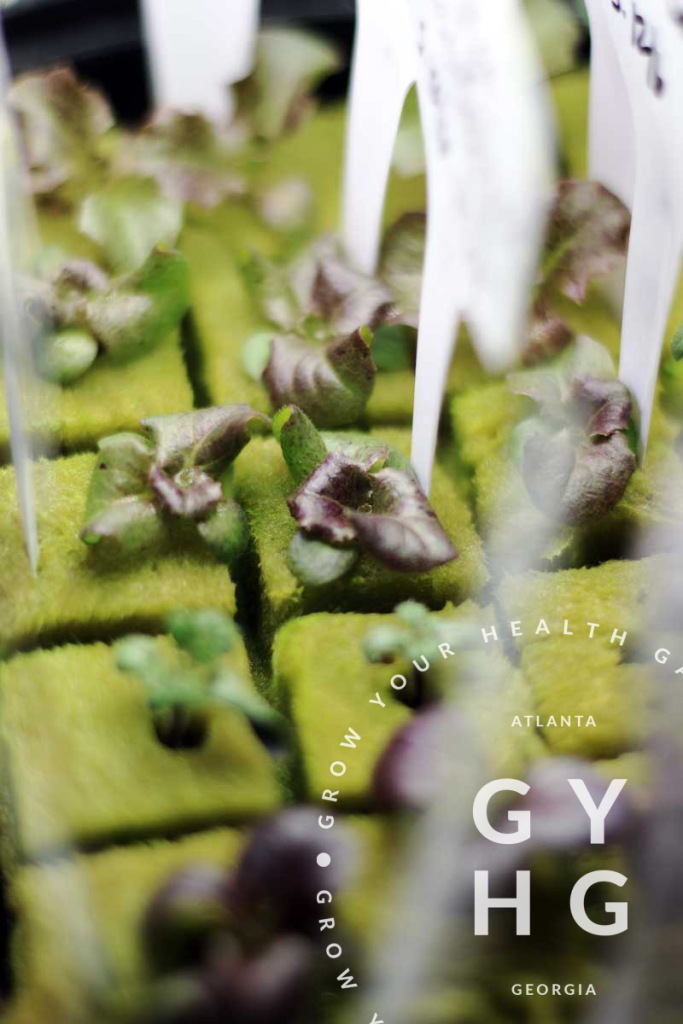
What is a Seed Starting Station?
Okay, I’m probably being “Captain Obvious” here, but a Seed Starting Station contains everything you need to start seeds. If I may recommend a few tips as you consider setting up your own Seed Starting Station:Your Seed Starting Station needs to be in a location where you walk by it at least once a day; two times or more a day is even better. Why? Seedlings need nurturing. Watching that they have proper light, temperature, moisture, and humidity levels are all key to successful strong seed starts.
Your Seed Starting Station need to have the proper temperature.
Temperatures do matter with germination and each seed / plant has different temps they prefer to germinate at and a “sweet spot” temperature range. For example, warm season plants typically prefer to germinate at temps above 65ºF. On the flip side, cool season plants, typically prefer to germinate at cooler temps. Spinach, for example, can be started in a container between two wet paper towel sheets in the refrigerator and after about 7-10 days you’ll see the root emerge. At this point, you can move it into soil or a wet rock wool and allow it to continue to grow into a young seedlings under bright light while maintaining high 60º-low 70ºF temps.
Seed heat mats can be a great tool for warming soil or rock wool when you set a tray on it. Just be careful to not overheat the young seeds. A thermostat on your heat mat can keep it in the proper range. Below is a quick cheat sheet for common veggies of optimal temperatures seeds typically germinate at:
| Minimum (F) | Optimum Range (F) | Optimum (F) | Maximum | |
| Beet | 40º | 50º-85º | 85º | 85º |
| Cabbage | 40º | 45º-95º | 85º | 100º |
| Cauliflower | 40º | 45º-85º | 80º | 100º |
| Celery | 40º | 60º-70º | 70º | 85º |
| Chard | 40º | 50º-85º | 85º | 95ª |
| Cucumber | 60º | 60º-95º | 95º | 105º |
| Eggplant | 60º | 75º-95º | 90º | 100º |
| Lettuce | 35º | 40º-80º | 75º | 85º |
| Melons | 60º | 75º-95º | 90º | 100º |
| Onion | 35º | 50º-95º | 75º | 95º |
| Parsley | 40º | 50º-85º | 75º | 90º |
| Pepper | 60º | 65º-95º | 85º | 95º |
| Pumpkin | 60º | 70º-90º | 90º | 100º |
| Spinach | 35º | 45º-70º | 70º | 85º |
| Squash | 60º | 70º-95º | 95º | 100º |
| Tomato | 50º | 70º-95º | 85º | 95º |
(Soil temperatures should be taken by inserting a soil thermometer
3-4 inches deep into the soil surface and noting temperature.
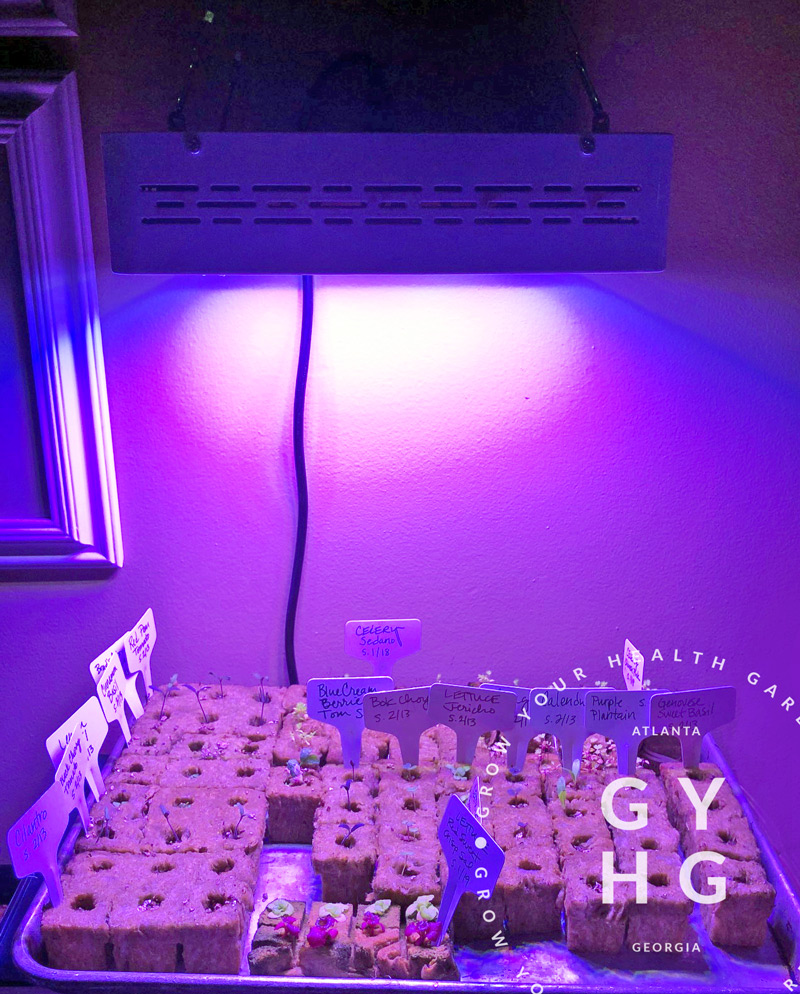
Your Seed Starting Station Needs Bright Light
Seedlings need a lot of light once they emerge — a nice bright strong light. If you don’t have a green house that can be temperature controlled for heat and cool air, you will need to grow your seedlings indoors. That means you will need artificial lighting intended for growing plants. Lighting could get real technical quick, so I’m going to try to keep it simple. When it comes to lighting and seed starting you need to keep three things in mind to make adjustments as needed to ultimately save money on seeds:
INTENSITY: You need to have enough lighting.
• LED bars: 8–10 inches apart from each other
• T5 fluorescents: 4–5 inches apart from each other
COVERAGE: You need to place lighting in the sweet spot — not too far from seedlings.
• LED bars (like Phillips): 8–12 inches away from seedlings
• T5 fluorescents: 5–6 inches away from seedlings
DURATION: You need to leave lights on long enough. 14-18 hrs a day
Your light needs to be bright (this is like the one we use) and you need to have a way to adjust the light so that it is the correct distance from the seedling. And if you’re planting into a hydroponic growing system where your seedling will mature into an adult plant, you’ll want lights that can be adjusted distance-wise from the plant (closer when they are young and further away about 8″-10″ when they are older). If you’re using a Tower Garden HOME or Tower Garden FLEX, these are the lights you will want to invest in as they can be adjusted from the plant as it grows and they have a built in timer making it easy to set it and go about your life never having to worry about the lights turning on and off again.
Don’t rely on a window with sun coming in as it will make your seedlings “leggy” where they stretch for the light and ultimately that makes them weaker plants as they mature. Today’s windows have a UV rating which actually blocks the essential UV light that seedlings crave. The window is designed to protect your home interior textiles such as the furniture, drapes, and carpet from fading — it is not taking into account seed germination needs at all.
Some love to say “You can just start your seedlings in your Tower Garden — I do it all the time.” A couple of cautionary words are needed when you hear or read this advice posted in social media groups. Simply, don’t do it. Seedlings started in this manner often become leggy and are overall weaker plants when they mature. Secondly, you can “burn” your tender seedling with high levels of nutrients that other mature plants may be getting within your growing system, as seedlings don’t require as much nutrients when they are teeny tiny. Remember to, instead, start your seedlings off strong in a Seed Starting Station under bright grow lights. Look for a light that has all the color spectrum of the sun and avoid cheap $20-$30 grow lights as they are just not strong enough for seedlings to thrive. We recommend a grow light like this that has a full-spectrum. A decent grow light for seedlings will cost between $60-$100. I’ve also used my Aerogarden Harvest as a light for seedlings when I don’t have anything growing in the ports.
You’ll want to keep a quick reference to the needs of different seeds.
Not all seeds need darkness or to be covered to begin the germination process. Some require light to germinate like lettuce. Some need to be scarified (slightly chipped) or go through a cold period before they will germinate. We recommend printing off our Seeds That Require Special Treatment Reference Chart and laminating it or sticking it in a 3-ring binder sheet protector to use as a quick reference (or just bookmark our reference page and come back to it as you need to).
Your Seed Station needs to have supplies relating to starting seeds and nurturing stored nearby
Here’s a list of some common supplies I use for soil and a list for common supplies I use for hydroponics.
Hydroponics:
• 1.5″ rock wool
• bowl for soaking rock wool
• vermiculite for seeds that need to be covered
(see our list here if you’re unsure)
• liquid kelp (I add a TBSP to my water soak)
• seeds you intend to plant (those that are not in the freezer)
• plant tags
• permanent marker
• access to a water source and/or some sort of watering can to “water in” seeds
• and a tray of some sort (I use an old cookie sheet) to rest your starts upon under lights for easy moving around from under your grow light to outdoors as temps allow or to your indoor growing system.
• heat mat with temp gauge
• grow light
Soil:
• Seed starting tray cells, recycled containers that can be repurposed as small pots, or small paper pots
• potting mix or screened peat moss
• worm castings (to mix into your potting mix) (Note: don’t purchase and ship during hot months as temps of 85ºF in shipment will begin to kill beneficial bacteria in castings.)
• access to a water source and/or some sort of watering can to “water in” seeds
• seeds you intend to plant (those that are not in the freezer)
• plant tags
• permanent marker
• and a tray to rest your seed starts on and move them easily from under your grow light to outdoors as temps allow.
• heat mat with temp gauge
• grow light
Now to the best part. Your own personal produce section!
To have a continual harvest, you’ll want to implement a sequential planting system. Pick a day that you are at your leisure (i.e.: Sundays are usually a restful day for most folks) and put a reminder on your calendar to plant at a certain time every week or every two weeks paying attention to your growing conditions (i.e.: indoor, cool season, warm season) and available space.
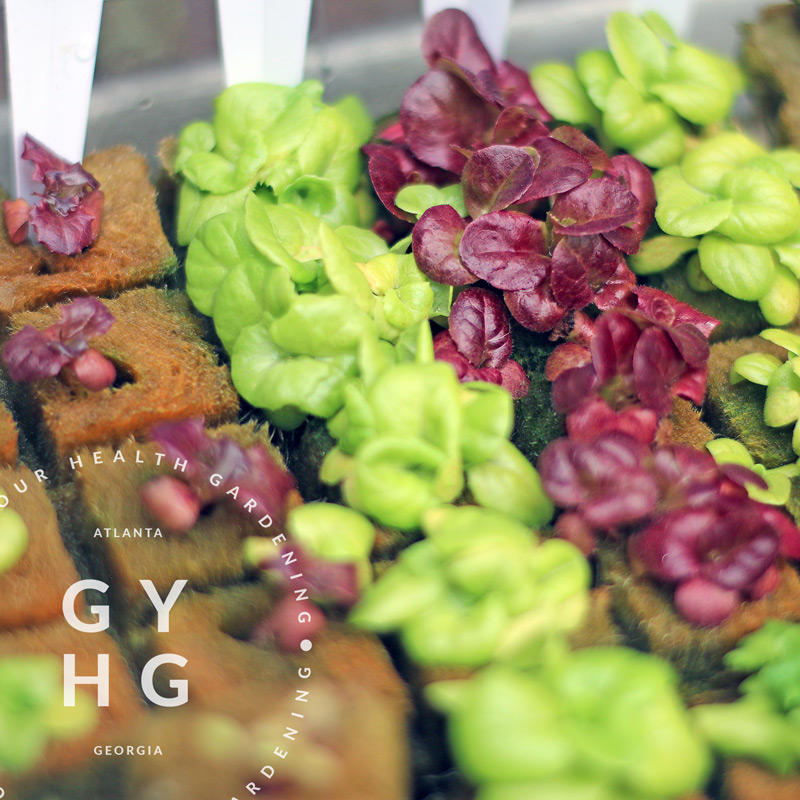
Let’s say you want to have a continuous supply of Bibb Lettuce. If you have a 28 port Tower Garden, you can plant 4 rock wools with Bibb Lettuce seed making sure to include a couple extra seeds per rock wool of which you’ll thin down as they germinate to the strongest one. You’ll repeat this process, planting several lettuce seeds into a single rock wool cube, filling four cubes total. As shown in the below planting chart, by week 4, your week 1 seedlings will be ready to transfer into your system. With each passing week, you’ll put the four seedlings that are ready from previous week plantings into the next row up of your vertical hydroponic / aeroponic Tower Garden. By week 10, you will have harvested your row 1 Bibb Lettuce (four ports = four heads of bibb lettuce to feed a typical family of four for a week). Once your lower lettuce has been harvested (pulled out of the port), the following week, replace the net pots and wipe down the port entrance with a cotton ball with alcohol on it and put a new clean net pot in it’s place. You are ready to plant the next set of four seedlings in these empty ports. As you continue to harvest up the vertical garden, you will clean each port and then plant the next seedling into it.
Note, if you are growing outdoors, sequential planting will get trickier, because temperature will be a variable. As temps raise towards summer time, bibb lettuce will begin to bolt (or go to seed) quicker or go limp if it is not a heat tolerant variety. This type of sequential planting works best if growing greens indoors and if the green has a 6-week grow cycle. This could work for Bok Choy and most greens. Consider putting some herbs like chives in the top row… these are cut and come again meaning that once they are a certain height, you can start cutting them 3″-4″ from the base of the plant and they will continue to grow from the center. Keep in mind that at some point, you will need to clean your system and restart the process, but in theory, if growing indoors, plants should continue to grow at a steady rate if you get in the habit of planting enough to fill four ports each week.
BIBB LETTUCE OR BOK CHOY EXAMPLE OF SEQUENTIAL PLANTING SCHEDULE FOR 1 TOWER GARDEN WITH 28 PORTS:
| Week 1 | Week 2 | Week 3 | Week 4 | Week 5 | Week 6 | Week 7 |
|---|---|---|---|---|---|---|
| Start 4 cubes w/seeds | Start 4 cubes w/seeds | Start 4 cubes w/seeds | Start 4 cubes w/seeds | Start 4 cubes w/seeds | Start 4 cubes w/seeds | Start 4 cubes w/seeds |
| Trans-plant into Tower Garden… | Week 1 seedlings Btm Row 1 of TG | Week 2 seedlings Btm Row 2 of TG | Week 3 seedlings Btm Row 3 of TG | Week 4 seedlings Row 4 of TG |
| Week 8 | Week 9 | Week 10 | Week 11 | Week 12 | Week 13 | Week 14 |
|---|---|---|---|---|---|---|
| 4 cubes w/seeds | Start 4 cubes w/seeds | Start 4 cubes w/seeds | Start 4 cubes w/seeds | Start 4 cubes w/seeds | Start 4 cubes w/seeds | Start 4 cubes w/seeds |
| Week 5 seedlings Row 5 of TG | Week 6 seedlings Row 6 of TG | Week 7 seedlings Row 7 of TG | Week 8 seedlings Row 1 of TG | Week 9 seedlings Row 2 of TG | Week 10 seedlings Row 3 of TG | Week 11 seedlings Row 4 of TG |
| Harvest off of btm row 1 lettuce | Harvest off of btm row 2 lettuce | Harvest off of btm row 3 lettuce | Harvest off of btm row 4 lettuce | Harvest off of btm row 5 lettuce |
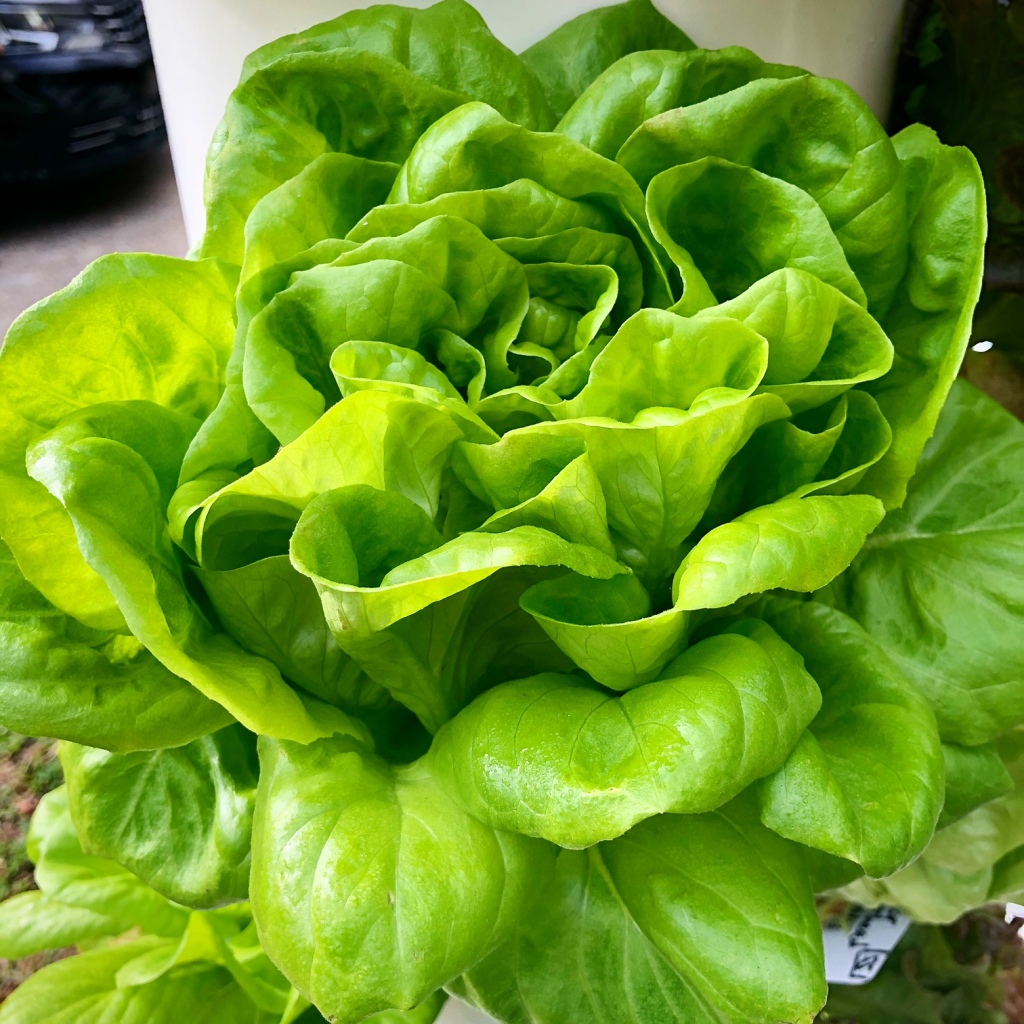
No matter what you want to grow, evaluate about how long the plant(s) you want to grow take to get to maturity for harvest, calculate when it will be ready for consumption, and enjoy your bounty continuously throughout the season with weekly seed starting in your own personal Seed Starting Station.
Happy Growing!
— Erin
PS: Be sure to post your pics of your Seed Starting Station on social media and tag us at #gyhg and maybe you’ll get featured on our Instagram or Facebook channels and get some FREE seeds!

